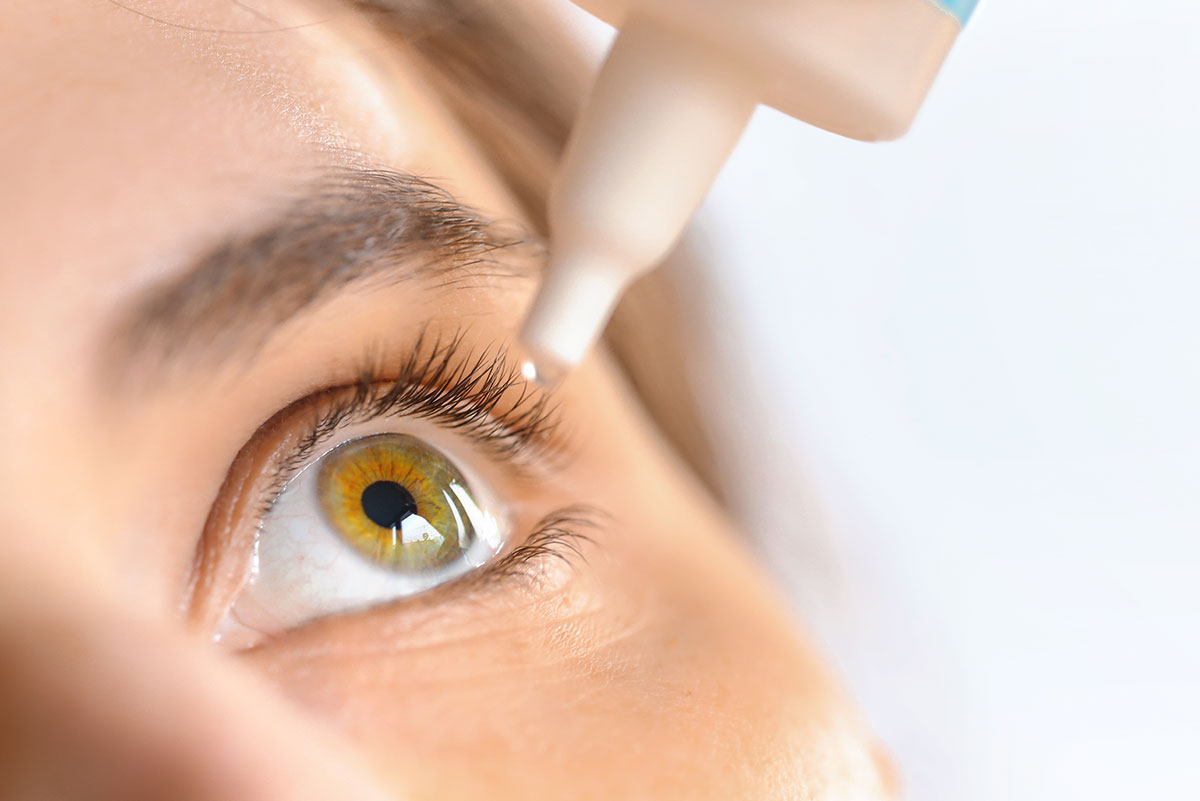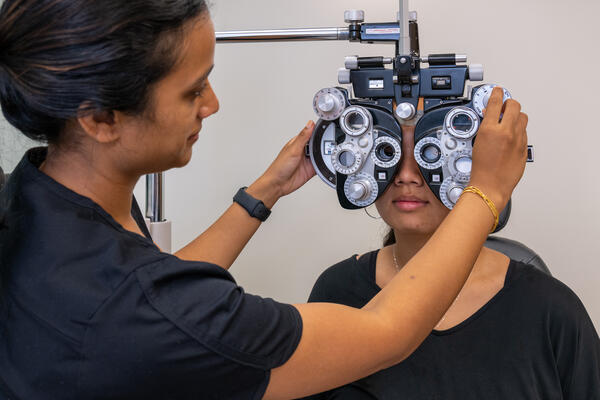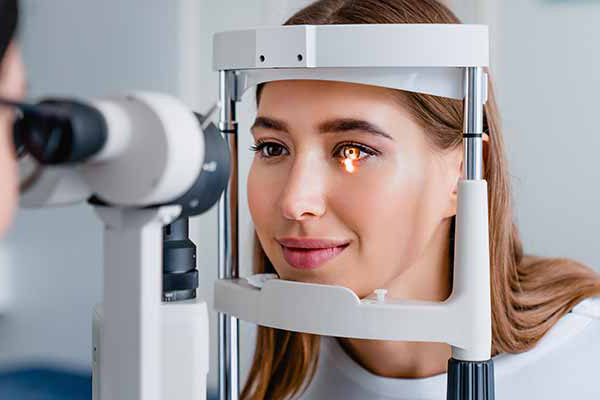Customized Cataract Care Service: See Our Clinic for Solutions
Customized Cataract Care Service: See Our Clinic for Solutions
Blog Article
Discovering the State-of-the-Art Technologies Utilized for Treating and detecting Eye Problems
In the realm of ophthalmology, the evolution of modern technology has actually considerably enhanced the tools readily available for identifying and treating numerous eye conditions. From innovative imaging innovations that provide thorough insights right into ocular structures to robotic-assisted surgeries that use unequaled precision, the landscape of eye treatment is constantly advancing. With the combination of expert system in diagnostics, gene therapy advancements, and virtual truth rehabilitation, the opportunities for enhancing person outcomes are broadening at a rapid speed. The convergence of these sophisticated innovations holds the assurance of transforming the area of ophthalmology, offering new methods for personalized and efficient treatments.

Advanced Imaging Technologies
Advanced Imaging Technologies have changed the field of ophthalmology by giving comprehensive and specific visualization of the eye structures. Optical Comprehensibility Tomography (OCT) stands out as a crucial innovation in this realm. OCT uses light waves to record high-resolution cross-sectional pictures of the retina, enabling the identification of minute structural adjustments. This non-invasive technique aids in the early discovery and tracking of numerous eye conditions such as macular degeneration, diabetic person retinopathy, and glaucoma.
Furthermore, Fundus Photography is an additional vital device in sensory imaging. This strategy entails recording detailed pictures of the back of the eye, consisting of the retina and optic disc. Fundus Digital photography aids in documenting the development of eye conditions, reviewing therapy efficacy, and educating patients about their eye health.

Robotic-Assisted Procedure
Robotic-assisted procedures have actually considerably advanced the capabilities of ocular surgical procedure, ushering in a brand-new era of precision and efficiency in treating various eye conditions. By integrating robotic technology into procedures, eye doctors can attain unrivaled accuracy and control, resulting in improved patient outcomes.
One of the key advantages of robotic-assisted surgical procedure in ophthalmology is the improved dexterity and security it supplies to doctors. The robot arms can carry out accurate movements with a high level of precision, enabling delicate treatments with marginal invasiveness. This level of precision is particularly beneficial in surgical procedures entailing the retina, where even minor mistakes can have considerable implications for a patient's vision.
In addition, robotic-assisted surgical systems provide real-time imaging and comments to the surgeon, allowing them to make enlightened choices throughout the treatment. This technology boosts the specialist's situational awareness and enables modifications to be made quickly, guaranteeing optimal outcomes for the patient.
Artificial Knowledge in Diagnostics
With the development of cutting-edge innovations enhancing medical accuracy in sensory treatments, the combination of Expert system in diagnostics has actually become a crucial advancement revolutionizing the field of eye treatment. Synthetic Knowledge (AI) algorithms are being progressively used to evaluate intricate data from imaging innovations like optical comprehensibility tomography (OCT) and fundus photography to help in the very early detection and precise medical diagnosis of various eye conditions. These AI systems can successfully identify patterns and anomalies in photos that might not be discernible to the human go eye, allowing quicker medical diagnosis and treatment planning.
AI algorithms can likewise predict condition progression, recommend customized therapy strategies, and analyze the effectiveness of interventions. By improving the diagnostic process, AI not just boosts the efficiency of eye care professionals but also boosts patient outcomes by enabling prompt treatments. As AI proceeds to development, its duty in diagnostics is anticipated to increase, using brand-new possibilities for early intervention and personalized therapy in the area of ophthalmology.
Genetics Therapy Innovations
In the realm of ocular developments, recent strides in gene treatment advancements have sparked significant passion amongst researchers and healthcare specialists alike. Genetics therapy holds tremendous pledge in transforming the treatment of numerous eye problems by targeting the underlying hereditary causes. By introducing hereditary material right into cells to make up for unusual genetics or to supply a missing gene, genetics therapy supplies a tailored technique to dealing with acquired eye conditions such as retinitis pigmentosa, Leber congenital amaurosis, and others that were formerly considered untreatable.

As research study in gene treatment remains to development, the capacity for tailored therapies for a broader variety of eye conditions expands, providing brand-new expect clients with hereditary eye illness.
Virtual Fact Rehab
Virtual fact rehab has arised as an innovative approach in boosting the healing and recovery procedures for individuals with different visual disabilities. glaucoma service near me. By mimicing real-world settings with immersive technology, online fact uses an unique system for vision treatment and rehab. This cutting-edge method makes it possible for individuals to involve in interactive workouts and activities designed to improve visual skill, depth assumption, eye coordination, and general aesthetic functioning
One secret benefit of virtual truth recovery is its ability index to personalize therapy programs based upon the specific requirements and capacities of each patient. With real-time responses and monitoring, healthcare experts can track progression, adjust interventions, and supply individualized like optimize results. Furthermore, digital reality technology can produce a secure and regulated space for individuals to practice visual jobs, get over obstacles, and build confidence in a digital setting before transitioning to real-world situations.
Final Thought
To conclude, the advancements in imaging technologies, robotic-assisted surgical treatments, man-made knowledge diagnostics, genetics treatment advancements, and online truth rehab have actually dramatically enhanced the diagnosis and therapy of eye problems. retina service near me. These cutting edge technologies have revolutionized the area of ophthalmology, enabling even more effective and accurate procedures. As technology continues to evolve, the future of eye care looks encouraging with the possibility for a lot more innovative solutions to boost person results
In the realm of ophthalmology, the evolution of modern technology has actually substantially enhanced the devices available for diagnosing and dealing with numerous eye conditions. Fundus Photography helps in documenting the development of eye illness, assessing therapy effectiveness, and educating people regarding their eye health.
Synthetic Intelligence (AI) formulas are being increasingly made use of to evaluate complex information from imaging technologies like optical comprehensibility tomography (OCT) and fundus photography to aid in the early discovery and accurate medical diagnosis of various eye problems.In conclusion, the advancements in imaging modern technologies, robotic-assisted surgical treatments, artificial intelligence diagnostics, genetics therapy technologies, and virtual fact rehabilitation have actually significantly enhanced the medical diagnosis and treatment of eye conditions. As modern technology continues to evolve, the future of eye care looks appealing with the possibility for also more you can try this out cutting-edge solutions to enhance individual outcomes.
Report this page